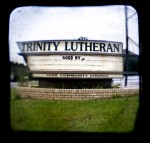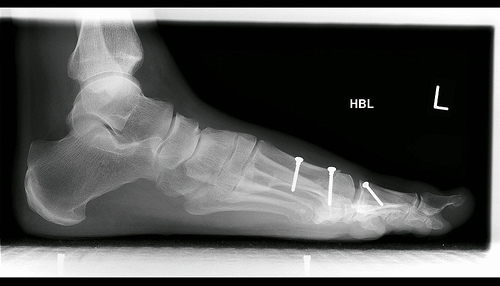- photo courtesy of Imaginationsis
Part of an ongoing series on Everyday Spirituality, this is a guest post by Hans Gustafson. Hans currently serves as the assistant director of the Jay Phillips Center for Interfaith Learning, a joint academic center at Saint John’s University (Collegeville, MN) and the University of St. Thomas (St. Paul, MN), where he also teaches on an adjunct basis in the theology departments. He will be defending his dissertation in Philosophy of Religion and Theology from Claremont Graduate University (CA) in the next month or two.
If you’d like to write a post for this series, please contact me through my website.
I write here about a particular “everyday spirituality” that seeks to foster a “spirituality of the everyday.” While the former emphasizes the lived religious experience of God-attuned daily rhythms, the latter reflects on experiencing God in the seemingly mundane.
The rhythm of the robust North American continental seasons of Minnesota ties one to the land. For instance, it dictates when I plant hops in the spring, harvest them in the fall, brew in the winter, and drink thereafter. For many, I suspect, this seasonal ritual plays out on their stovetop (given the offerings of local agriculture) or their tending to their yard or their interaction with the community (e.g., coaching little league).
The seasons of life (meteorological, religious, communal, etc.) foster in me the opportunity to be present and pay attention to God’s presence in all things (what I refer to as pansacramentality). However, lately I’ve learned that these rhythms also provide more than the mere opportunity to recognize God’s presence in ways I’ve done in the past, but they also beckon me to connect to the past in new ways.
Thus beyond fostering the everyday spiritual practice of “being present” and “paying attention to God in the world,” I also now attempt to tap into the reality of the past that reverberates in the present. This includes, of course, celebrating and participating in past spiritual rituals (e.g. fishing, harvesting, religious holidays, traditional meals, etc.), but it also includes the painful events of the past that may or may not have been a part of my life experience. This practice is very much connected to place (not necessarily space).
For instance, revisiting places that I consider personally sacred, since they hosted memorable and formative events of my past (e.g. family cabin, a particular lake, childhood neighborhood, where I met my wife, etc.), serves as blessed spiritual experiences. But what is often more powerful (and terrifying) are the places that I revisit that are connected to pain, both personal and historical.
This year marks the 150th anniversary of the Dakota-U.S. war which resulted in the execution of 38 Dakota men in Mankato (MN) on December 26,1862. It remains the largest mass hanging in U.S. history. My seasonal ritual of remembering events and practices of the places that I call home can be very different from that of its Natives peoples. After listening to the stories of others (which here includes those of the Native communities), their memories become grafted into my own.
Recently I visited a few of the naturally beautiful places along the confluence of the Mississippi and Minnesota rivers in the heart of Minneapolis/St. Paul. I drive over these rivers twice everyday without much thought about the place beyond its natural beauty which (re)presents God in a unique yet ordinary way. However, after hearing the stories that the local Native Americans tell about this place (which remains at the center of their creation stories), and how they hear the cries of their passed ancestors who were marched into the concentration camp, contributes to my experience of this place going forward. It remains no less sacred nor is it somehow spiritually depraved, but rather now includes the very real pain which is spiritually present from the historical past.
I do not perceive my pansacramental spirituality of striving to find the reality of God in all things as an overly romantic view, but rather as an attempt (albeit it often naïve and inadequate) to foster an everyday spiritual practice that takes seriously the presence of God in the mundane (profane) and the downright troubling. This includes (perhaps more so than any other aspect) recognizing the reality of pain and suffering in the world – and God’s presence therein. For me, this spiritual practice (which I readily admit I am not very good at) has as its goal the daily recognition of being present in the places I encounter, but being equally aware of their histories (both painful and promising).
This reflection hints at my “cloudy water,”[1] or “muddy water,” spirituality. This spirituality is not always pretty. In taking seriously the glorious and terrifying presence of God in all things, it can often be painful, but no less sacred nor spiritual. In recognizing the past in the present, and by grafting in the stories of others, I strive encounter God in a given place as well as the people that have tread there both now and before.
[1] The meaning of the Dakota word Minnesota is “cloudy water” or “milky water.” It is not “sky-blue waters” as perhaps Hamm’s Brewery has suggested.












